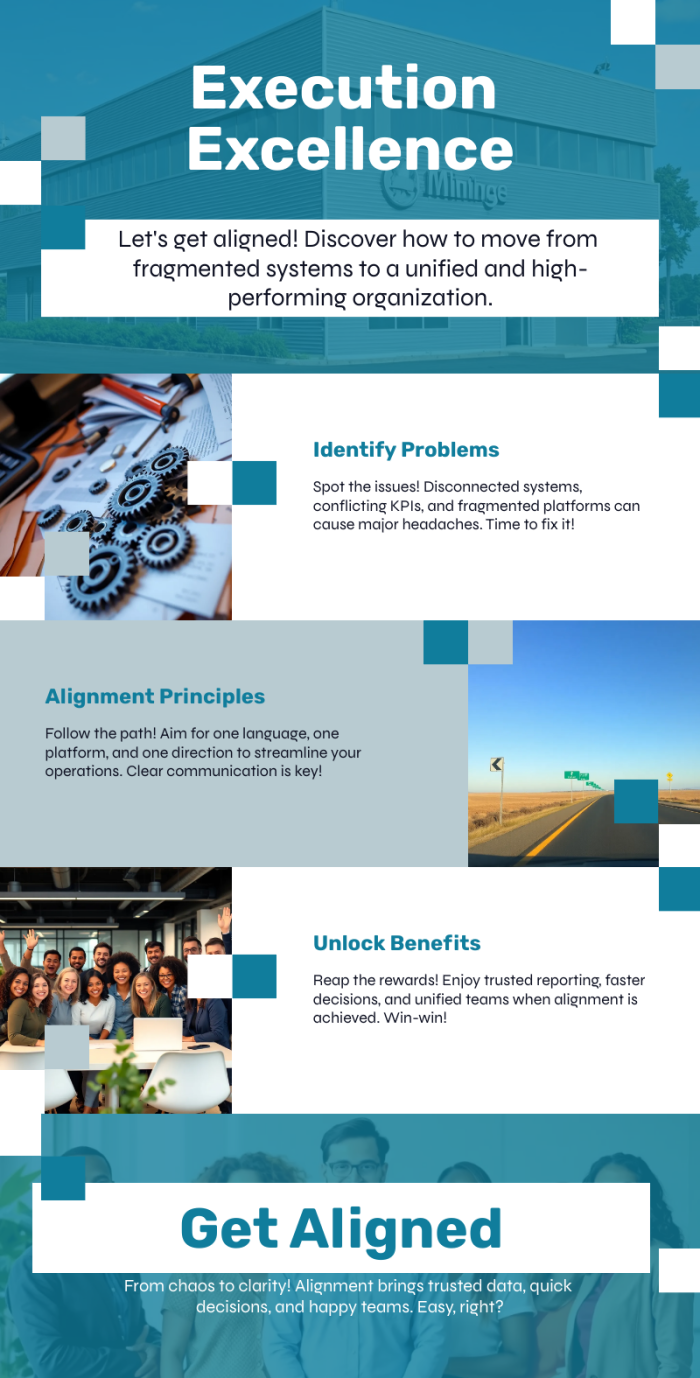Why Architecture, Not Attitude, Shapes Strategy
In large, multi-site industrial operations, it’s easy to assume that strategy breakdowns are cultural. But more often than not, the real issue isn’t attitude—it’s architecture. When your organization isn’t structurally aligned, even the best strategies fail to scale.
Strategy Without Alignment Is Just Intent
A compelling vision, smart KPIs, and great leadership mean little if teams across functions and sites are using different systems, definitions, and workflows. One team measures cost per ton differently. Another defines “downtime” inconsistently. A third builds reports in Excel while corporate uses BI dashboards.
This isn’t innovation. It’s organizational entropy—and it quietly erodes trust, performance, and accountability.
Misalignment Isn’t a People Problem. It’s a System Problem.
Your maintenance team isn’t “non-compliant.” They’re operating on a different playbook. Your production planners aren’t “out of sync.” They’re responding to a different version of demand. Your site leaders aren’t “resistant.” They’re burdened by legacy systems that don’t connect to corporate’s vision.
These gaps aren’t behavioral—they’re architectural. And that means they’re solvable.
Customer Job (from Value Proposition Canvas)
“Gain operational insights; integrate systems; reduce downtime”
Related Pains
- Disconnected systems and data definitions breed confusion
- Lack of shared KPIs causes conflicting decisions
- Fragmented platforms undermine execution across sites
One Language, One Platform, One Direction
Alignment begins with shared meaning—and that requires:
- Standardized naming conventions
- Unified dashboards and KPIs
- Consistent workflows across procurement, finance, and operations
- A single version of truth across every level of the business
The more consistent your structure, the more scalable your execution.
Technology Can Enable—or Undermine—Alignment
Poorly integrated systems pull the organization apart. Well-architected platforms enforce clarity. It’s not just about software. It’s about designing your tech stack to reflect your business logic—and enforcing that logic consistently.
When every team brings their own metrics to the table, alignment collapses. But when every function sees the same data, tracks the same indicators, and speaks the same operational language, collaboration becomes second nature.
Learn more about operational alignment in enterprise execution and impact of strategic alignment on performance.

Alignment Isn’t Optional—It’s Foundational
Without alignment:
- Decisions are delayed, debated, or duplicated
- Trust in data evaporates
- Accountability is impossible
With alignment:
- Transformation gains traction across entities
- Reporting becomes trusted, not questioned
- Teams move faster—together
Conclusion: Align Before You Scale
Misalignment doesn’t just slow execution. It undermines strategy. And in industries where scale, risk, and complexity define the business, alignment isn’t a nice-to-have—it’s a non-negotiable.
If you want transformation to work across every asset, site, and team—start by speaking the same operational language.
